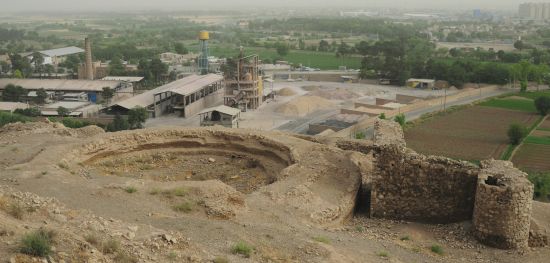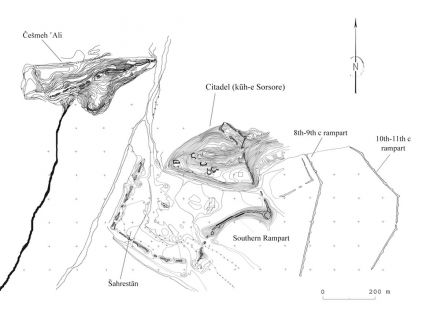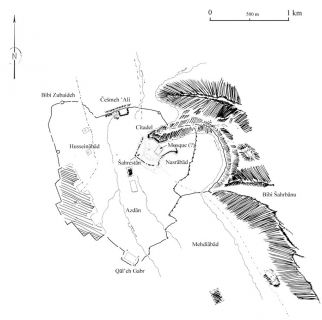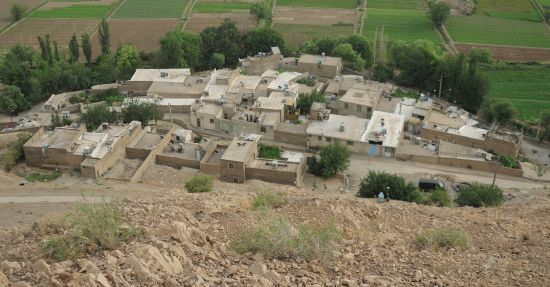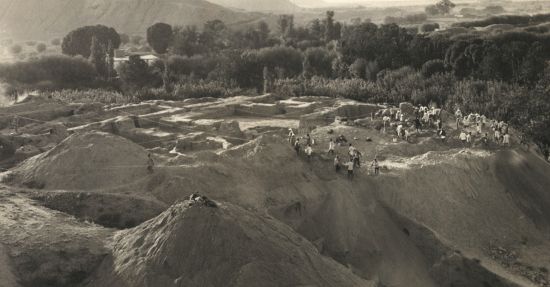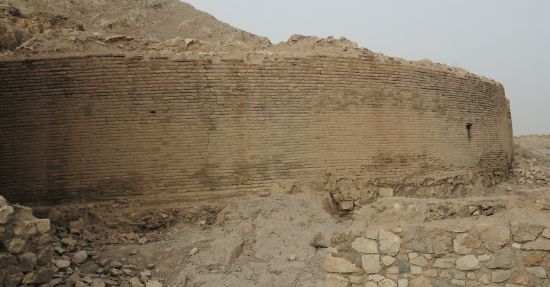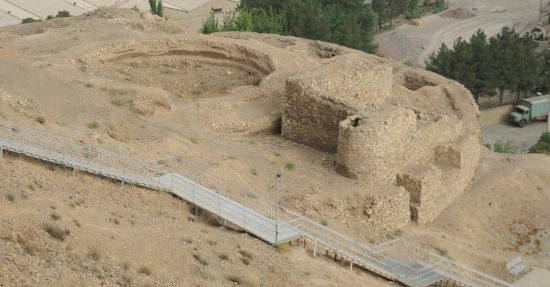Rayy
Iran Rayy
Shehr-i Rayy, Rai, Rayy, Ragha, RhagesOlarak da bilinir.
Seijuk
Rayy, whose founding dates back to 3,000 BC, was one of the most important medieval cities in lran. The name of the city is mentioned in the inscriptions of Bisut from Old Raghan City, dated to the 5h century BC, and also in the texts of the Avesta, which indicates that this location was an important religious center. it was the center of the kingdom during the Parthian Dynasty, and continued in the Nestorian and Sasanian periods. in the Sasanian period, the settlement of Çeşmi Ali in Rayy was not heavily populated, but instead, a smaller settlement known as the mound of Tepe Mill was more densely inhabited. The lands surrounding the city were conquered by the Arabs in 640, after which Rayy was used as the central city by the governors ruling the eastern portion of ıran. AI-Mahdi, son of the caliph Mansur, was one of the governors of Rayy who later became the Abbasid caliph. The city initially served as a cantonment town far the Islamic armies. During this period, an important mosque was built in the city, and afterwards the city was called Muhammadiyah, and developed Islamic characteristics. During the excavations of Rayy, unglazed ceramics of the early Islamic period were recovered.
Until the end of the 10th century, Rayy was the most important city in northwestern lran. in the 11th century, Oghuz Turks appeared in and around the city. The city came under the rule of the Seljuks in the 11th century after the Dandanakan War. in the excavations of the area, many glazed and luster technique ceramics made during this period have been discovered. in the early years of the Seljuk Empire, Rayy became one of the central cities of lran and the plaster-covered walls that surround the city were built. The city's population decreased in the 12th century due to the Shiite-Sunni clashes all over lran at this time. After the Mangol invasion in 1221, the town fell into ruin. After this period, the old town was abandoned and Veramin city began to develop in the south. The city witnessed a second destruction in 1384 by the invasion of the armies of Tamurlane.
The tomb of Shah Abd'ul Azim, a descendant of the Prophet Muhammed, was restored under the rule of the Seljuks and following dynasties. Some documents relative to the city's plan were uncovered in excavations carried out since the beginning of the 20th century. During the excavations, the foundations of structures belonging to the pre-Islamic and Islamic periods have been unearthed The medieval settlement of Rayy, which includes the tomb of the Seljuk Sultan Tugrul Bey, was established in Cheshme Ali in the west and on the hillsides of Kuh-i Sursure in the south. The inner fortress of city was located on the cliff of the Bibi Sahrbanu hill on the eastern side of the city. A number of fortified doors were placed in various parts of the walls surrounding the city. A small castle adjacent to the city walls was built in the southeast sector of the city, and recalls Anatolian stronghold citadels.
Two structures, the Nakkarhane and the Eminabad, are located on the mountain range of Bibi Sahrbanu to the east of Rayy. it is believed that these structures date from the Seğuk period.
The city became famous far silk production and trade during the Seğuk period. Some silk textiles, demonstrating this production, have been recovered during excavations.
Adle, C., "Notes preliminaires sur la tour disparue de Rey (466/1073-4)", Memorial Volume of ttıe VI ttı lntemational Congress of lranian Art and Archaeology: Oxford, 1972, s.1-12.
Adle, C., "Constructions funeraires a Ray cca Xe-Xlle siecle," Akten des VII. irıtematonalen Kongresses für iranische Kunst und Archaologie: München, 1976, s.511-15.
Blair, S.S., "The Monumental lnscriptions from Early lslamic ıran and Transoxiana", Leiden, 1992, s. 185---{i
Godard, A., "L'origine de la madrasa, de la mosquee et du caravanseral a quatre iwans", Ars lslamica 15-16, 1951, s.1-9.
Kariman, B., "Ra Bostan [AncientRayy", 2vols., Tehran, lran. Solar 1345-9/1966-70. Kariman. 8., "Barkh az ttıer-i b munda az ra qad m (A few of ttıe remaining monuments from ancient Rayy)", Tehran, ıran. Solar 1350/1971.
Keall EJ., 'The Topography and Architecture of Medieval Rayy," Akten des VII. internationalen Kongresses für iranische Kunst und Archaologie: München, 1976, s.537-44.
Keall, EJ., 'The Topography and Architecture of Medieval Rayy", Akten des Vll. lntematonalen Kongresses für lranische Kunst und Archaologie München, 7.-10. September 1976, Berlin, 1979, s.537-543.
Merritt J_L,, "Archaeological Textiles Excavated at Rayy'', Tech. & Cult, xxxiv (1999), s.7-15, 197
Schmidt, E., "Flights over Ancient Cities of lran", Chicago, 1940.
Treptow, T., "The Medieval Persian City of Rayy", Chicago, 2007.
Vignier, C., "The new Excavation at Rhages," Burlington Magazine 25, London, 1914.

